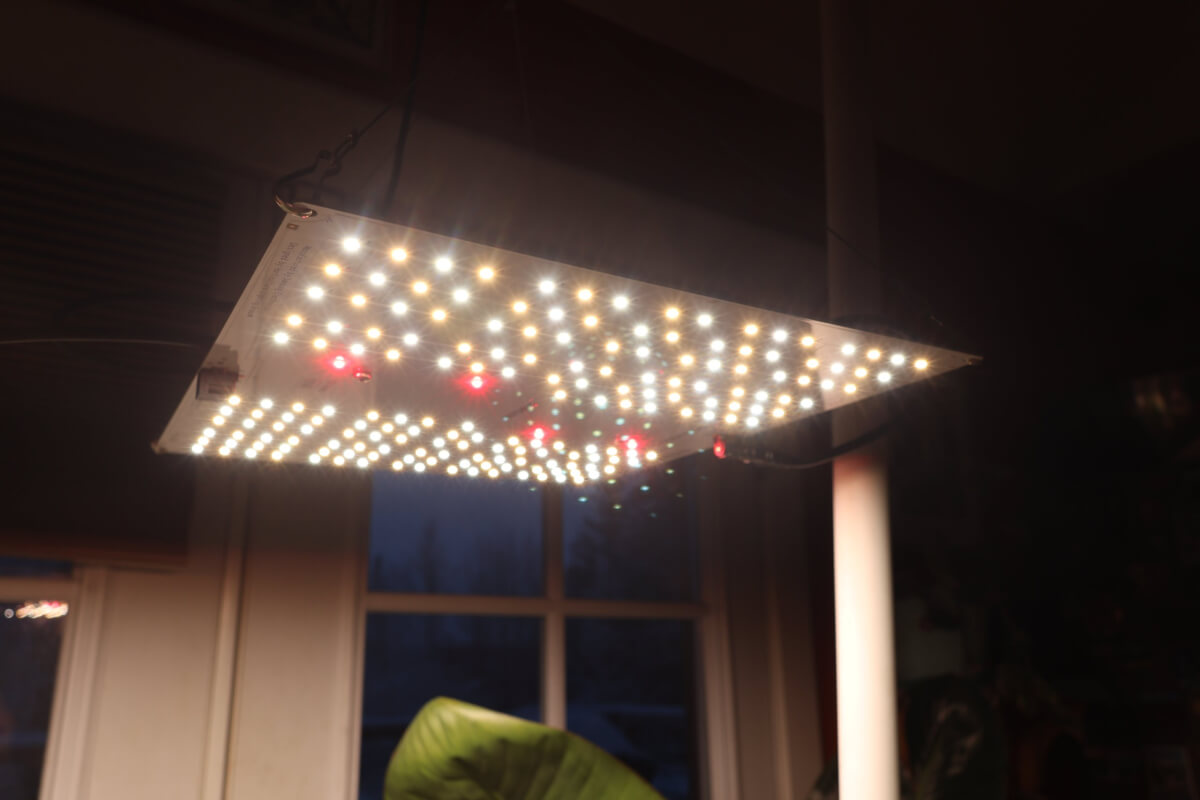Let’s talk grow lights! Many of you will be firing up your growing spaces soon and others of you might be thinking about building a growing space for indoor seedlings.
We’ve pretty much tried every kind of lighting out there. There was a time where LED wasn’t as good and was also ridiculously expensive. We are past that point now and these days, LED is the only thing that makes sense if you’re paying your own power bill. With significantly lower operational costs, we’ve even found it worthwhile to replace our old CFL based systems.
Our favorite kind of indoor grow lighting these days are called quantum board LED’s. (Specifically, Horticultural Lighting Group’s HLG-100 series. Made in the USA!) While they aren’t particularly “sexy,” being a bunch of LED’s strapped to an aluminum heat sink, they are exceptionally efficient and very powerful. To us, the function well exceeds the form.
We favor these over “tube” style lights as they can cover larger areas well and are similar cost-wise when you try to cover larger areas like an entire growing table. For example, we can cover a 2×6 table with just two of these lights and get exceptional light intensity across the entire growing area.
Light intensity matters. Low light intensity will mean your plants will “stretch” for the light, resulting in leggy starts. Conversely, these powerful next-gen LED lights can easily burn a little seedling if they are too close. We generally try to aim for about 15,000 to 18,000 lux (using a cell phone lux app) at the top of our seedlings, which was a near-impossible goal back in our CFL lighting days. This results in exceptional quality, compact garden starts that are comparable to those grown in heated greenhouses.
So, if you were wondering where we are at for lighting these days, that our two cents!



Do you think an overly-high-lux light could be tamed down with an inline resistor or a PWM power supply at 10kHz? This would both extend its lifespan and obviate the risk of sunburning your adopted plant babies.
It is electrically possible, yes. We put up a post today on our DIY grow lights and in that design, I designed that capability into the system using a potentiometer. The technical prerequisite is an LED driver that allows for variable output, which not all LED grow light drivers have. (It’s an extra cost item and not everyone will use it, so it’s often omitted.) While you could probably alter the high voltage output directly, LED’s are a bit complicated since they need a high voltage starting current to “fire up.” (So, I wouldn’t recommend it since the circuit design is complicated and would need timed gates to deal with differing current needs.) There might be commercial grow lights out there with this feature built in, but I’m not aware of any off the top of my head.
The “right” way to use these lights is to raise them up and get wider spread of the light. Yes, they are powerful, but that power is best used for covering larger footprints.